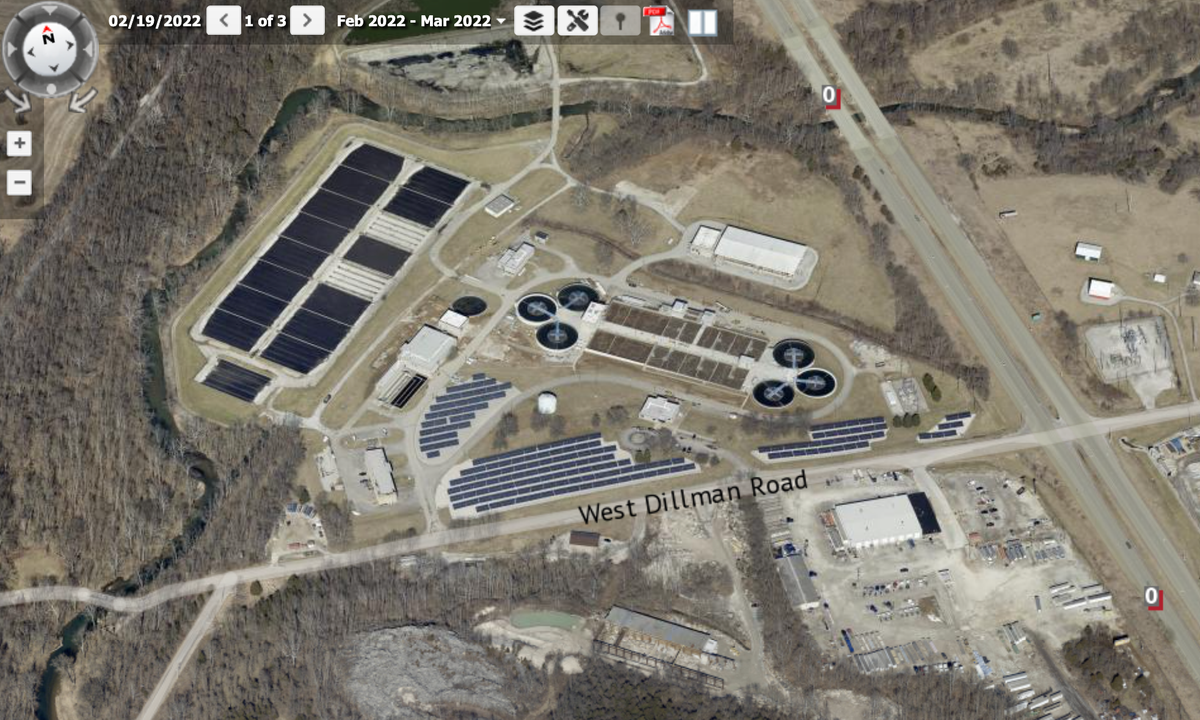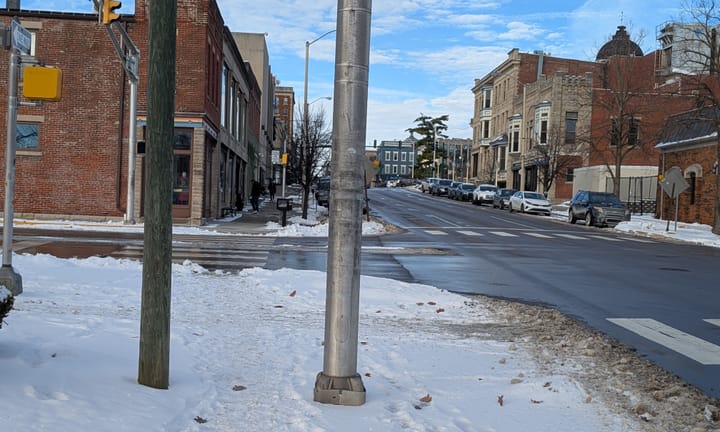Bloomington eyes big hike in septic disposal fees, would still cover just half the cost
On Dec. 3, Bloomington’s city council will consider an ordinance raising the septic dumping rate at the Dillman Road plant from about 2 cents to 8 cents per gallon—a four-fold increase. A study showed current charges no longer cover treatment costs.


Starting in 2026, local septic waste haulers who take the stuff to Bloomington’s Dillman Road wastewater treatment plant for disposal could see a four-fold increase in the rate charged by the city.
That increase means haulers would pay around $80 instead of $20 for a 1,000-gallon load, which is a typical size for a residential septic tank. That translates to about $60 more that septic tank owners would pay for a routine pumping after septic waste haulers pass along the extra cost to their customers.
At its meeting on Wednesday (Dec. 3) the week after Thanksgiving, Bloomington’s city council will consider an ordinance change that would overhaul how the city charges waste haulers for dumping septic tank waste at the Dillman Road plant.
The proposed ordinance would replace the city’s current multi-tiered fee schedule with a single, uniform rate of 8.0 cents per gallon for all hauled wastewater beginning Jan. 1, 2026. The existing rates have been in place since 2000 and currently amount to the equivalent of 2.06 cents per gallon, according to a memo from Steven Stanford, who is the pretreatment coordinator with the City of Bloomington Utilities (CBU).
CBU says the two-decade-old rates no longer cover the cost of treating hauled waste. In his memo Stanford writes that inflation has significantly increased operating and construction costs since the last update and that current charges “are insufficient to cover the cost of treatment, administration, and billing for the acceptance and treatment of hauled wastewater.”
In 2024, CBU hired Crowe LLP under a $50,000 contract to analyze treatment costs and determine an appropriate rate. Crowe calculated that the true cost of service is 17.5 cents per gallon concluding that that a rate at that level “would provide the revenue corresponding to the cost of treatment, CBU staff activities, and billing charges”
But CBU staff are recommending an increase that goes just halfway to the level of cost recovery, in order to avoid shock to the market. About the idea of implementing full cost recovery in one step, Stanford’s memo says that it “is likely to be disruptive to the current waste hauler’s market and counterproductive for CBU’s mission of promoting environmental stewardship.” That raises the specter of deferred maintenance by septic tank owners, with the potential for avoidable backups.
Part of the proposed ordinance change would eliminate the current difference in rates between domestic septage, grease, commercial and industrial waste, and other hauled waste. The CBU memo concludes those distinctions no longer reflect real cost differences: “The different rates charged … have little basis in cost of treatment … as each of the four wastewater categories typically exhibit strength of the same magnitude.”
CBU says that even at the quadrupled rate of 8 cents per gallon, Bloomington would still be charging about half the state average for septage disposal, which the Indiana Department of Environmental Management reported at 17.9 cents per gallon, according to CBU’s memo.
In the proposed ordinance wording, the city council would be finding that the new hauled waste disposal rate structure “is nondiscriminatory, reasonable, and just.”
At the Dec. 3 meeting of the city council, a vote to enact the ordinance could be taken. The council’s Dec. 3 meeting starts at 6:30 p.m.




Comments ()